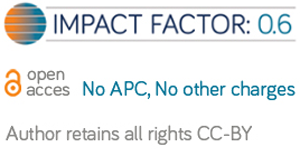Self-Oriented and Socially Prescribed Perfectionism Among Hungarian Professional Folk Dancers
DOI:
https://doi.org/10.5708/EJMH.20.2025.0043Keywords:
perfectionism, dancers, perceived stress, burnout, coping skillsAbstract
Introduction: Those characterized by high levels of self-oriented or socially prescribed perfectionism strive to meet high expectations. Dancers are prone to perfectionism and related negative psychological factors.
Aims: In this study, we investigated how perfectionism among Hungarian professional folk dancers is related to certain psychological factors.
Methods: Ninety-six professional dancers completed an online survey (47.9% male, 52.1% female, mean age: 29.91 years, SD = 8.46). To measure perfectionism, we utilized Hewitt and Flett’s Multidimensional Perfectionism Scale. We carried out a moderation analysis based on linear regression to measure the associations between the perfectionism subscales and various psychological variables and examine whether the two subscales moderated each other’s effects.
Results: Higher levels of socially prescribed perfectionism were associated with higher perceived stress, burnout, weaker concentration, and lower coachability. On the other hand, self-oriented perfectionism showed fewer associations; however, these were indicative of a better mental state: those with higher self-oriented perfectionism showed lower levels of burnout, better concentration, and higher coachability. We also found that the two dimensions of perfectionism moderate each other’s effects. In the case of concentration and coachability, self-oriented perfectionism may mitigate the detrimental effects of socially prescribed perfectionism. In contrast, in the case of perceived stress, self-oriented perfectionism may actually exacerbate the harmful effects of socially prescribed perfectionism.
Conclusions: The results showed significantly more dysfunctions associated with socially prescribed perfectionism. On the other hand, self-oriented perfectionism was associated with adaptive psychological outcomes.
References
Arslan, İ., & Altan-Atalay, A. (2023). Too perfectionist to flow: The roles of perfectionistic strivings and perfectionistic concerns for flow in dance. Current Psychology, 42, 22506–22513.
https://doi.org/10.1007/s12144-022-03364-9
Brown, A. R. (2024). The role of resilience and coping strategies among African American college athletes [Doctoral dissertation]. Liberty University.
https://digitalcommons.liberty.edu/doctoral/6386
Burns, D. D. (1980). The perfectionist’s script for self-defeat. Psychology Today, 14(6), 34–51.
Cohen, S., Kamarck, T., & Mermelstein, R. (1983). A global measure of perceived stress. Journal of Health and Social Behavior, 24(4), 385–396.
https://doi.org/10.2307/2136404
Cumming, J., & Duda, J. L. (2012). Profiles of perfectionism, body–related concerns, and indicators of psychological health in vocational dance students: An investigation of the 2x2 model of perfectionism. Psychology of Sport and Exercise, 13(6), 729–738.
https://doi.org/10.1016/j.psychsport.2012.05.004
Deu, R. S. (2020). Dance. In M. Khodaee, A. L. Waterbrook, & M. Gammons (Eds.), Sports-related fractures, dislocations and trauma (pp. 853–856). Springer Nature Switzerland AG.
https://doi.org/10.1007/978-3-030-36790-9
Dixon, F. A., Lapsley, D. K., & Hanchon, T. A. (2004). An Empirical Typology of Perfectionism in Gifted Adolescents. Gifted Child Quarterly, 48(2), 95–106.
https://doi.org/10.1177/001698620404800203
Duna Művészegyüttes. (n.d.) https://dunamuveszegyuttes.hu/tarsulat/
Dunkley, D. M., Blankstein, K. R., Halsall, J., Williams, M., & Winkworth, G. (2000). The relation between perfectionism and distress: Hassles, coping, and perceived social support as mediators and moderators. Journal of Counseling Psychology, 47(4), 437–453.
https://doi.org/10.1037/0022-0167.47.4.437
Dunkley, D. M., Zuroff, D. C., & Blankstein, K. R. (2003). Self-critical perfectionism and daily affect: Dispositional and situational influences on stress and coping. Journal of Personality and Social Psychology, 84(1), 234–252.
https://pubmed.ncbi.nlm.nih.gov/12518982/
Dunn, J. G. H., Dunn, J. C., Gamache, V., & Holt, N. L. (2014). A person-oriented examination of perfectionism and slump-related coping in female intercollegiate volleyball players. International Journal of Sport Psychology, 45(4), 298–324.
Favor, J. K. (2011). The relationship between personality traits and coachability in NCAA Divisions I and II female softball athletes. International Journal of Sports Science & Coaching, 6(2), 301–314.
https://doi.org/10.1260/1747-9541.6.2.301
Fitos Dezső Társulat. (n.d.) https://fitosdezsotarsulat.hu/rolunk/
Frost, R. O., Heimberg, R. G., Holt, C. S., Mattia, J. I., & Neubauer, A. L. (1993). A comparison of two measures of perfectionism. Personality and Individual Differences, 14(1), 119–126.
https://doi.org/10.1016/0191-8869(93)90181-2
Frost, R. O., Marten, P., Lahart C., & Rosenblate R. (1990). The dimensions of perfectionism. Cognitive Therapy and Research, 14, 449–468.
https://doi.org/10.1007/BF01172967
Fry, M. D., Hogue, C. M., Iwasaki, S., & Solomon, G. B. (2021). The relationship between the perceived motivational climate in elite collegiate sport and athlete psychological coping skills. Journal of Clinical Sport Psychology, 15(4), 334–350.
https://doi.org/10.1123/jcsp.2020-0002
Garratt-Reed, D., Howell, J., Hayes, L., & Boyes, M. (2018). Is perfectionism associated with academic burnout through repetitive negative thinking? PeerJ, 6, Article e5004.
https://doi.org/10.7717/peerj.5004.
Gaudreau P. (2019). On the distinction between personal standards perfectionism and excellencism: A theory elaboration and research agenda. Perspectives on Psychological Science, 14(2), 197–215.
https://doi.org/10.1177/1745691618797940
Gaudreau, P. (2021). Separating the core definitional feature and the signature expressions of dispositional perfectionism: Implications for theory, research, and practice. Personality and Individual Differences, 181, Article 110975.
https://doi.org/10.1016/j.paid.2021.110975
Gaudreau, P., & Thompson, A. (2010). Testing a 2×2 model of dispositional perfectionism. Personality and Individual Differences, 48(5), 532–537.
https://doi.org/10.1016/j.paid.2009.11.031
Giacobbi, P. R. (2000) The athletic coachability scale: Construct conceptualization and psychometric analyses [Doctoral dissertation]. University of Tennessee.
https://trace.tennessee.edu/utk_graddiss/6117
Gustafsson, H., Hassmén, P., Kenttä, G., & Johansson, M. (2008). A qualitative analysis of burnout in elite Swedish athletes. Psychology of Sport and Exercise, 9(6), 800–816.
https://doi.org/10.1016/j.psychsport.2007.11.004
Gyömbér, N. (2017). A sportpszichológiai felkészítés szerepe a sportolói személyiség formál(ód)ásában. [The significance of sport psychological preparation in the formation of the personality of an athlete] [Doctoral dissertation]. Hungarian University of Sport Science.
https://doi.org/10.17624/TF.2018.3
Hall, H. K., Hill, A. P. (2012). Perfectionism, dysfunctional achievement striving and burnout in aspiring athletes: The motivational implications for performing artists. Theatre, Dance and Performance Training, 3(2), 216–228.
https://doi.org/10.1080/19443927.2012.693534
Hamachek, D. E. (1978). Psychodynamics of normal and neurotic perfectionism. Psychology: A journal of human behavior, 15(1), 27–33.
Hewitt, P. L., & Flett, G. L. (1991). Perfectionism in the self and social contexts: Conceptualization, assessment, and association with psychopathology. Journal of Personality and Social Psychology, 60(3), 456–470.
https://doi.org/10.1037/0022-3514.60.3.456
Hewitt, P. L., & Flett, G. L. (2014). Normative data [Unpublished online data].
https://hewittlab.sites.olt.ubc.ca/files/2014/11/MPS-norm.png
Hill, A. P. (2014). Perfectionistic strivings and the perils of partialling. International Journal of Sport and Exercise Psychology, 12(4), 302–315.
https://doi.org/10.1080/1612197x.2014.919602
Hill, A. P., & Curran, T. (2015). Multidimensional perfectionism and burnout: A meta-analysis. Personality and Social Psychology Review, 20(3), 269–288.
https://doi.org/10.1177/1088868315596286
Hill, A. P., Mallinson‐Howard, S. H., Madigan, D. J., & Jowett, G. E. (2020). Perfectionism in sport, dance, and exercise: An extended review and reanalysis. In G. Tenenbaum, & R. C. Eklund (Eds.), Handbook of sport psychology: Social perspectives, cognition, and applications (4th ed., pp. 121–157). John Wiley & Sons.
https://doi.org/10.1002/9781119568124.ch7
Jelinek, Zs. (2000). A sportbeli fizikai sérülékenység személyiségháttere. [The personality traits behind physical vulnerability in sports] [Unpublished master’s thesis]. Eötvös Loránd University.
Jowett, S., & Cockerill, I. M. (2003). Olympic medallists’ perspective of the athlete-coach relationship. Psychology of Sport and Exercise, 4(4), 313–331.
https://doi.org/10.1016/S1469-0292(02)00011-0
Jowett, G. E., Hill, A. P., Hall, H. K., & Curran, T. (2016). Perfectionism, burnout and engagement in youth sport: The mediating role of basic psychological needs. Psychology of Sport and Exercise, 24, 18–26.
https://doi.org/10.1016/j.psychsport.2016.01.001
Koutedakis, Y. (2000). “Burnout” in dance the physiological viewpoint. Journal of Dance Medicine & Science, 4(4), 122–127.
https://doi.org/10.1177/1089313X0000400402
Kovács, K., Berki, T., Ágoston, R., Smohai, M., Harsányi, Sz. G., Szemes, Á., & Gyömbér, N. (2020). A Sportolói Kiégés Kérdőív hazai adaptációja [The Hungarian adaptation of the Athlete Burnout Questionnaire]. Magyar Pszichológiai Szemle, 75(3), 391–406.
https://doi.org/10.1556/0016.2020.00023
LoCicero, K. A., Ashby, J. S., & Kern, R. M. (2000). Multidimensional perfectionism and lifestyle approaches in middle school students. The Journal of Individual Psychology, 56, 449–461.
Magyar Állami Népi Együttes. (n.d.) https://hagyomanyokhaza.hu/hu/mane/tarsulat
Magyar Nemzeti Táncegyüttes. (n.d.) https://mnte.hu/hu/tancegyuttes/
Maslach, C., & Leiter, M. P. (2016). Understanding the burnout experience: Recent research and its implications for psychiatry. World Psychiatry, 15(2), 103–111.
https://doi.org/10.1002/wps.20311
Medveczné Atinay, D., Bernáth, L., & Pigniczkyné Rigó, A. (2022). Professzionális táncosok mentális jóllétének és megküzdési módjainak vizsgálata a Covid-19 okozta karantén idején [Examination of the Mental Well-being and Coping Methods of Professional Dancers During the Covid-19 Lockdown Period]. Tánc és Nevelés. Dance and Education, 3(1), 3–20.
https://doi.org/10.46819/TN.3.1.21-38
Mobley, M., Slaney, R. B., & Rice, K. G. (2005). Cultural validity of the Almost Perfect Scale--Revised for African American college students. Journal of Counseling Psychology, 52(4), 629–639.
https://doi.org/10.1037/0022-0167.52.4.629
Molnar, D. S., Reker, D. L., Culp, N. A., Sadava, S. W., & DeCourville, N. H. (2006). A mediated model of perfectionism, affect, and physical health. Journal of Research in Personality, 40(5), 482–500.
https://doi.org/10.1016/j.jrp.2005.04.002
Mor, S., Day, H. I., Flett, G. L., & Hewitt, P. L. (1995). Perfectionism, control, and components of performance anxiety in professional artists. Cognitive Therapy and Research, 19, 207–225.
https://doi.org/10.1007/BF02229695
Moravcsik-Kornyicki, Á., & R. Fedor, A. (2021). Az egészség komplex megközelítése, mint az egészségszociológiai vizsgálatok elméleti kerete [A complex approach to health as a theoretical framework for health sociology studies]. Acta Medicinae et Sociologica 12(32), 24–49.
https://doi.org/10.19055/ams.2021.05/31/2
Noh, Y-E., Morris, T., & Andersen, M. B. (2009). Occupational Stress and Coping Strategies of Professional Ballet Dancers in Korea. Medical Problems of Performing Artists, 24(3), 124–134.
https://doi.org/10.21091/mppa.2009.3027
Nordin-Bates, S. (2014). Perfectionism. Resource paper for dancers and teachers. IADMS.
https://iadms.org/media/5910/iadms-resource-paper-perfectionism.pdf
Nordin-Bates, S. M., Cumming, J., Aways, D., & Sharp, L. (2011). Imagining yourself dancing to perfection? Correlates of perfectionism in ballet and contemporary dancers. Journal of Clinical Sport Psychology, 5(1), 58–76.
https://doi.org/10.1123/jcsp.5.1.58
Nordin-Bates, S. M., Raedeke, T. D., & Madigan, D. J. (2017). Perfectionism, burnout, and motivation in dance: A replication and test of the 2× 2 model of perfectionism. Journal of Dance Medicine & Science, 21(3), 115–122.
https://doi.org/10.12678/1089-313X.21.3.115
Nordin-Bates, S. M., Schwarz, J. F. A., Quested, E., Cumming, J., Aujla, I. J., & Redding, E. (2016). Within-and between-person predictors of disordered eating attitudes among male and female dancers: Findings from the UK Centres for Advanced Training. Psychology of Sport and Exercise, 27, 101–111.
https://doi.org/10.1016/j.psychsport.2016.07.004
Ober, T. M., Williams, K. M., Kell, H. J., & Holtzman, S. (2024). Measuring coachability by situational judgment task: Development and initial validation. Personality and Individual Differences, 219, Article 112503.
https://doi.org/10.1016/j.paid.2023.112503
Olajos, T., Hőgye-Nagy, Á., Héjja-Nagy, K., & Dávid, M. (2021). Az adaptív és maladaptív perfekcionizmussal együtt járó motivációs mintázatok feltáró vizsgálata [An exploratory study of motivational patterns associated with adaptive and maladaptive perfectionism]. Magyar Pszichológiai Szemle, 76(2), 353–376.
https://doi.org/10.1556/0016.2021.00009
Olsson, L. F., Madigan, D. J., Hill, A. P., & Grugan, M. C. (2022). Do athlete and coach performance perfectionism predict athlete burnout? European Journal of Sport Science, 22(7), 1073–1084.
https://doi.org/10.1080/17461391.2021.1916080
Özcan, V. (2021). Correlation between ability to cope with sporting problems and athlete engagement. OPUS International Journal of Society Researches, 18(44), 7435–7450.
https://doi.org/10.26466/opus.969885
Pacht, A. R. (1984). Reflections on perfection. American Psychologist, 39(4), 386–390.
https://doi.org/10.1037/0003-066X.39.4.386
Parker, W. D. (1997). An empirical typology of perfectionism in academically talented children. American Educational Research Journal, 34(3), 545–562.
https://doi.org/10.2307/1163249
Periasamy, S., & Ashby, J. S. (2002). Multidimensional perfectionism and locus of control: Adaptive vs. maladaptive perfectionism. Journal of College Student Psychotherapy, 17(2), 75–86.
https://doi.org/10.1300/J035v17n02_06
Phillips, A. C. (2015). Perceived Stress. In M. Gellman, & J. Turner (Eds.), Encyclopedia of Behavioral Medicine (pp. 1453–1454). Article Chapter 479-2 Springer.
https://doi.org/10.1007/978-1-4419-1005-9_479
Quested, E., Cumming, J., & Duda, J. L. (2014). Profiles of perfectionism, motivation, and self-evaluations among dancers: An extended analysis of Cumming and Duda (2012). International Journal of Sport Psychology, 45(4), 349–368.
Raedeke, T. D., & Smith, A. L. (2001). Development and preliminary validation of an athlete burnout measure. Journal of Sport and Exercise Psychology, 23(4), 281–306.
https://doi.org/10.1123/jsep.23.4.281
Ranieri, W. F., Steer, R. A., Lavrence, T. I., Rissmiller, D. J., Piper, G. E., & Beck, A. T. (1987). Relationships of depression, hopelessness, and dysfunctional attitudes to suicide ideation in psychiatric patients. Psychological Reports, 61(3), 967–975.
https://doi.org/10.2466/pr0.1987.61.3.967
Revilla, M. A., Saris W. E., & Krosnick J. A. (2014). Choosing the number of categories in agree-disagree scales. Sociological Methods and Research, 43(1), 73–97.
https://doi.org/10.1177/0049124113509605.
Rice, K. G., Ashby, J. S., & Slaney, R. B. (1998). Self-esteem as a mediator between perfectionism and depression: A structural equations analysis. Journal of Counseling Psychology, 45(3), 304–314.
https://doi.org/10.1037/0022-0167.45.3.304
Rice, K. G., Bair, C. J., Castro, J. R., Cohen, B. N., & Hood, C. A. (2003). Meanings of perfectionism: A quantitative and qualitative analysis. Journal of Cognitive Psychotherapy, 17(1), 39–58.
https://doi.org/10.1891/jcop.17.1.39.58266
Rice, K. G., & Dellwo, J. P. (2002). Perfectionism and self‐development: Implications for college adjustment. Journal of Counseling & Development, 80(2), 188–196.
https://doi.org/10.1002/j.1556-6678.2002.tb00182.x
Rice, K. G., & Liu, Y. (2020). Perfectionism and burnout in R&D teams. Journal of Counseling Psychology, 67(3), 303–314.
https://doi.org/10.1037/cou0000402
Sagar, S. S., & Stoeber, J. (2009). Perfectionism, fear of failure, and affective responses to success and failure: The central role of fear of experiencing shame and embarrassment. Journal of Sport & Exercise Psychology, 31(5), 602–627.
https://doi.org/10.1123/jsep.31.5.602
Shafique, N., Gul, S., & Raseed, S. (2017). Perfectionism and perceived stress: The role of fear of negative evaluation. International Journal of Mental Health, 46(4), 312–326.
https://doi.org/10.1080/00207411.2017.1345046
Simons, E. E., & Bird, M. D. (2023). Coach-athlete relationship, social support, and sport-related psychological well-being in National Collegiate Athletic Association Division I studentathletes. Journal for the Study of Sports and Athletes in Education, 17(3), 191–210.
https://doi.org/10.1080/19357397.2022.2060703
Smith, M. M., Saklofske, D. H., Yan, G., & Sherry, S. B. (2017). Does perfectionism predict depression, anxiety, stress, and life satisfaction after controlling for neuroticism? A study of Canadian and Chinese undergraduates. Journal of Individual Differences, 38(2), 63–70.
https://doi.org/10.1027/1614-0001/a000223
Smith, R. E., Schutz, R. W., Smoll, F. L., & Ptacek, J. T. (1995). Development and validation of a multidimensional measure of sport-specific psychological skills: The Athletic Coping Skills Inventory-28. Journal of Sport & Exercise Psychology, 17(4), 379–398.
https://doi.org/10.1123/jsep.17.4.379
Stauder, A., & Konkoly-Thege, B. (2006). Az Észlelt Stressz Kérdőív (PSS) magyar verziójának jellemzői [Characteristics of the Hungarian version of the Perceived Stress Scale (PSS)]. Mentálhigiéné és Pszichoszomatika, 7(3), 203–216.
https://doi.org/10.1556/Mental.7.2006.3.4
Stevenson, J. C., & Akram, U. (2022). Self-critical thinking mediates the relationship between perfectionism and perceived stress in undergraduate students: A longitudinal study. Journal of Affective Disorders Reports, 10, Article 100438.
https://doi.org/10.1016/j.jadr.2022.100438
Stoeber, J. (2011). The dual nature of perfectionism in sports: Relationships with emotion, motivation, and performance. International Review of Sport and Exercise Psychology, 4(2), 128–145.
https://doi.org/10.1080/1750984X.2011.604789
Stoeber, J., Feast, A. R., & Hayward, J. A. (2009). Self-oriented and socially prescribed perfectionism: Differential relationships with intrinsic and extrinsic motivation and test anxiety. Personality and Individual Differences, 47(5), 423–428.
https://doi.org/10.1016/j.paid.2009.04.014
Stoeber, J., Kempe, T., & Keogh, E. J. (2008). Facets of self-oriented and socially prescribed perfectionism and feelings of pride, shame, and guilt following success and failure. Personality and Individual Differences, 44(7), 1506–1516.
https://doi.org/10.1016/j.paid.2008.01.007
Stoeber, J., & Otto, K. (2006). Positive conceptions of perfectionism: Approaches, evidence, challenges. Personality and Social Psychology Review, 10(4), 295–319.
https://doi.org/10.1207/s15327957pspr1004_2
Stoeber, J., Otto, K., Pescheck, E., Becker, C., & Stoll, O. (2007). Perfectionism and competitive anxiety in athletes: Differentiating striving for perfection and negative reactions to imperfection. Personality and Individual Differences, 42(6), 959–969.
https://doi.org/10.1016/j.paid.2006.09.006
Szájer, P. (2019). A magyar úszó és para úszóválogatott sportolók pszichés tényezőinek összehasonlító vizsgálata [A comparative analysis of psychological factors in Hungarian Olympic and Paralympic swimming team members] [Doctoral dissertation]. Hungarian University of Sport Science].
https://doi.org/10.17624/TF.2020.2
Szászi, B., & Szabó, P. (2021). A táncos test: Egészség, testi elégedettség, testhez való viszony, evési attitűdök és önértékelés vizsgálata táncosok körében [Dancers’ Body: the Examination of Health, Body Satisfaction, Body Attitudes, Eating Attitudes, and Self-esteem Among Dancers]. Tánc és Nevelés. Dance and Education, 2(1), 4–29.
https://doi.org/10.46819/TN.2.1.30-54
Tashman, L. S., Tenenbaum, G., & Eklund, R. (2010). The effect of perceived stress on the relationship between perfectionism and burnout in coaches. Anxiety, Stress & Coping, 23(2), 195–212.
https://doi.org/10.1080/10615800802629922
Terry-Short, L. A, Owens, R. G., Slade, P. D. & Dewey, M. E. (1995). Positive and negative Perfectionism. Personality and Individual Differences, 18(5), 663–668.
http://dx.doi.org/10.1016/0191-8869(94)00192-U
Twitchett, E., Angioi, M., Koutedakis, Y., & Wyon, M. (2010). The demands of a working day among female professional ballet dancers. Journal of Dance Medicine & Science, 14(4), 127–132.
https://pubmed.ncbi.nlm.nih.gov/21703083/
Yang, J.-H., Yang, H.-J., Choi, C., & Bum, C.-H. (2023). Systematic review and meta-analysis on burnout owing to perfectionism in elite athletes based on the Multidimensional Perfectionism Scale (MPS) and Athlete Burnout Questionnaire (ABQ). Healthcare, 11(10), Article 1417.
https://doi.org/10.3390/healthcare11101417






